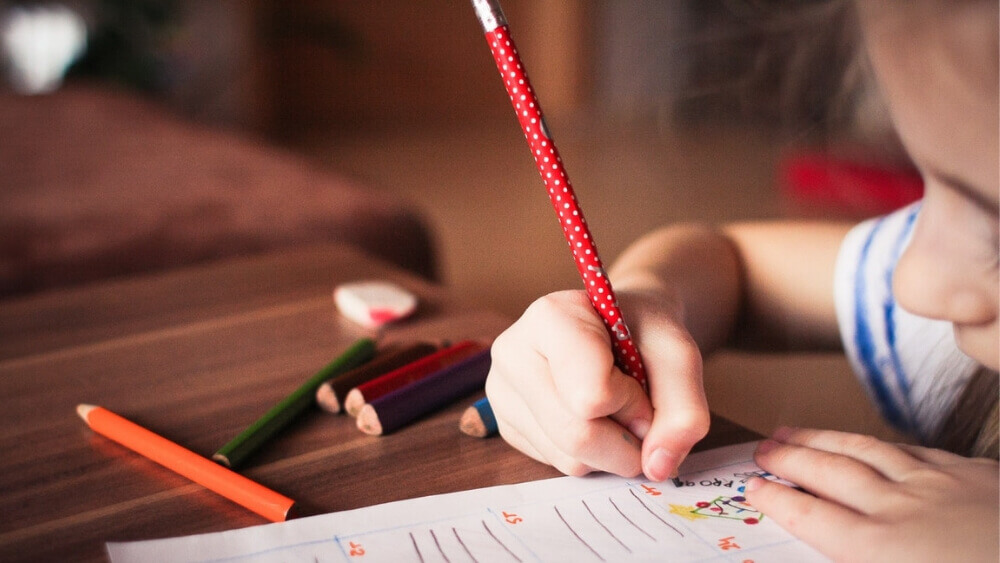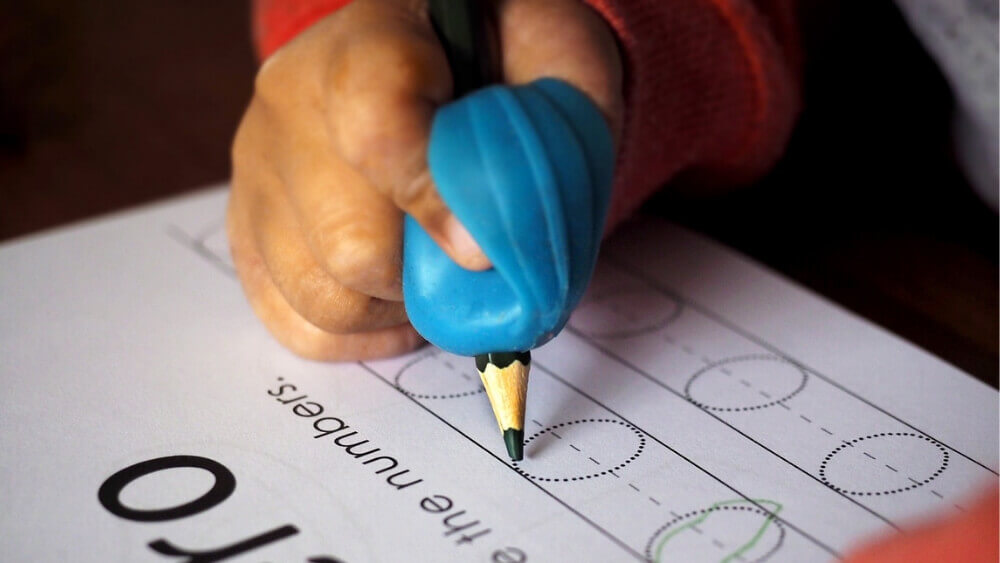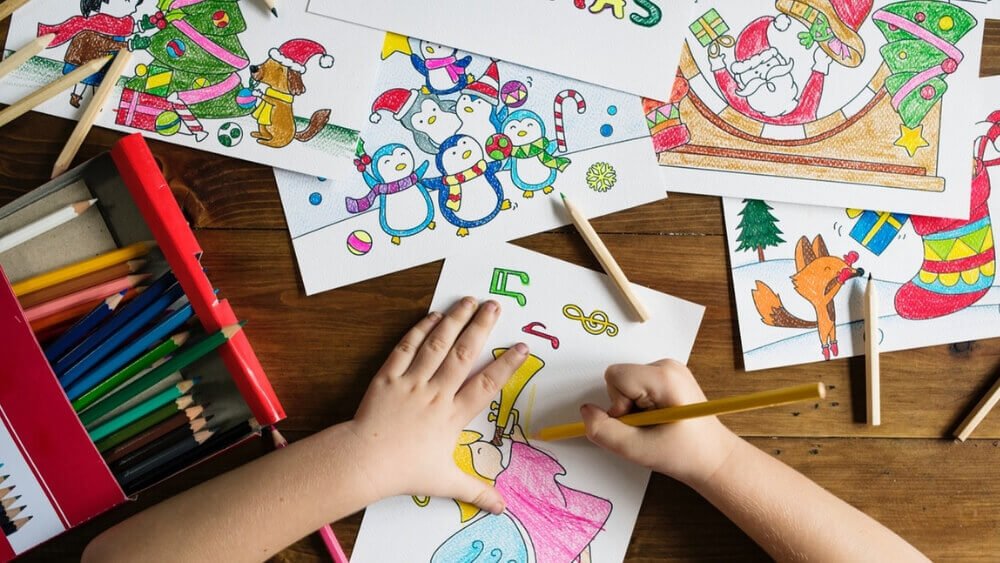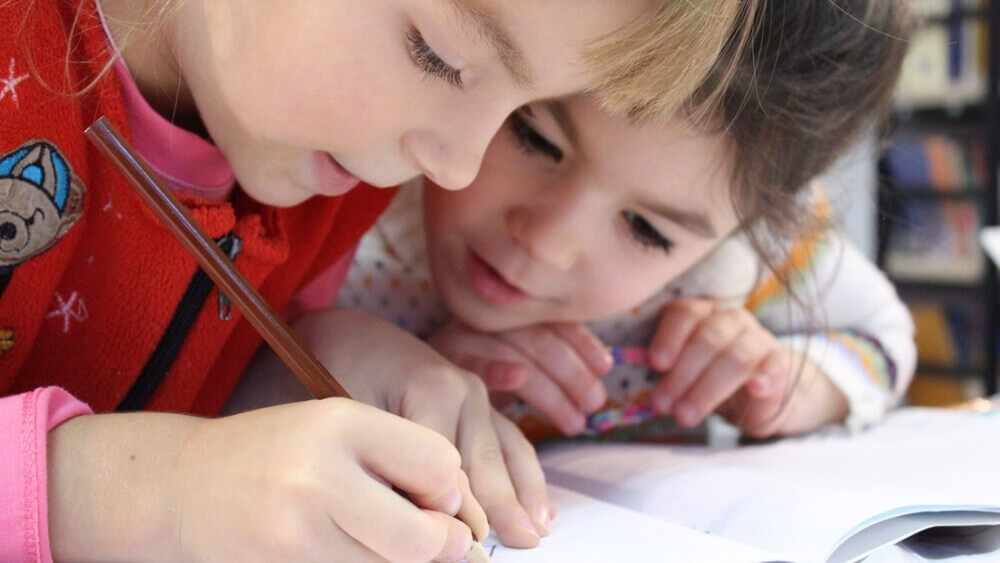How to improve your child’s handwriting?

Is that a ‘b’ or an ‘h’? ‘M’ or a mountain? Why is ‘t’ falling down?
Children’s handwriting can often be a funny business to read. You might want to laugh out on your child’s handwriting. At the same time, you are concerned about ‘what if his/her handwriting stays the same?’
It’s quite normal for a child to write words and letters in a misshapen manner. Children like to explore their creativity and imagination at the same time. They don’t realize the importance of good handwriting. They just write.
While some children just can’t make a good curve of the letters. They try their best, but they can’t. To help children out and their parents we have come up with a few techniques and precautions. These tips will help your child improve his/her handwriting.
1. The way of holding a pencil/pen.

It often happens that children hold the pencil/pen with the thumb pressing up against the index finger. Some children won’t even use the thumb. They prefer placing their pencil/pen between their index finger and the middle one. Children’s handwriting is affected a lot by the way they hold the pencil/pen. So teach your children to hold the pencil right. Doing so, they will get a good grip of the pencil/pen to write. This might tire their fingers or even hand for a while. But, once they get used to it they will do great.
2. Applying the right pressure

No matter how perfectly children hold the pen/pencil, the pressure they apply also matters. If the pressure is too much, all the energy gets wasted on merely holding the pencil/pen. It gets tough to move the hand ahead to write another letter. In the midst of all this, the letters get dragged and appear not good.
If the pressure is too low, children write it with ease but the pencil/pen won’t touch the paper properly. The words will appear lazy enough to look at. Make sure the pressure children apply is just right. Not too much, not too low. Just right, considering your child’s potential.
3. Practice different shapes

Letters are made out of different shapes. 1 is made up of a straight line, while 2 is made up of half heart and a line. A is made up of a triangle with two tiny lines, one each side. While B is made up of two half circles and a long line. Every letter and number is made up of different shapes. Guide your child to practice different shapes. Once children learn to draw perfect shapes, they will write the letters beautifully with ease.
4. Daily Practice

A daily practice is a must. When children practice to write or draw shapes every day they will get their hands on writing. With this, they won’t easily forget the art of writing. No compulsion as such to write for hours. Only a half hour or 15-minute practice would be enough. Writing a small poem or an essay on children’s choice of topic would keep them interested.
5. Check the tip of the pen/pencil

If the tip of the pencil is pinpointed the handwriting differs. If the tip is soft blunt, it differs again. If the tip of the pen is blunt there comes ease with it to write. While, if children use a Gel pen, handwriting differs again. Make sure the tip of the pen/pencil is soft enough to write with ease and pointed enough to stick firmly on the paper.
6. The distance between words and letters

What makes handwriting look great? The way the letters and words are presented. You can write a few words on the first line of each page and ask your children to write it in the same manner. Repeating the pattern of space and distance, children will eventually get used to it. Write a sentence that fits in one line. It would take 7-8 words per line. In the same way, write one sentence on each page. Then ask your child to write the same line below it again and again. This should be continued until the page ends and a new line begins.
7. Type of notebook

There are various books available that help and guide children to write neatly. There is a 4 line notebook available, which most knows of. It is easily available. It helps a great deal when it comes to handwriting. There are other handwriting books available as well. Some of them have a pattern or distorted lines on which children merely have to join to form a pattern or words. There are also possibilities that children might, in fact, get bored with the routine. You can keep them entertained with colourful books that have pictures or cartoon in them. Even drawing helps a lot to improve the handwriting.
8. Encourage and have patience

During all this learning and teaching, parents can often lose control. It is mostly because of little things or mistakes children make. You have asked your child to write a word. For you it is simple. It’s nothing. Children, on the other hand, find it difficult. They try and they try, many times, but are unable to conquer the words. At such times parents often lose control and shout or even give up on their children.
When something like this happens just take a long deep breath. Close your eyes and smile. Then you look at your child thinking, ‘he/she will learn it soon. I will help my child improve. It’s ok.’. See. it feels good already. Encourage children to write beautifully. They have all the potentials, abilities and resources available for them.
The art of writing isn’t tough, but it is not easy as well. Children will eventually overcome their tiny flaws in handwriting. Know that your child is working hard as well. It’s just their potential is different from the adults. Cope up with their potential and let’s guide children write brilliantly well.




